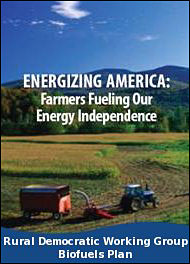
When it comes to global warming, Andrew Revkin of The New York Times is without peer at clarifying the science and Elizabeth Kolbert of The New Yorker is the scariest writer in the land.
But this year, The Washington Post established itself as the newspaper best at showing us how global warming is happening right now, with superb articles on the alarming spread of the mountain pine beetle, on changes in the movements of butterflies, polar bears, and mountain water sources, on energy producers ready for regulation of carbon emissions, and this past weekend a major story on how the insurance industry has changed its attitude about homeowner policies in Florida and along the East Coast, thanks to global warming.
Joel Garreau is not the first reporter to cover the story, but his story — “A Dream Blown Away” — brings it home with more clarity and verve than any in memory.
To wit:
A place near the water has been an American dream for a very long time. Fifty-four percent of Americans live within 50 miles of a coast.
This is the year, however, in which the big boys in global finance got religion about climate change. As a result, this American dream — as far north as the Washington area, and even New York and New England — is under attack.
Follow the money. Insurance doesn’t sound like a world-changer. It seems so banal and prosaic, like reliable electricity or clean water.
Yet without it — you want a place to live? You cannot get a mortgage without insurance.
You want a job? A commercial enterprise cannot run without insurance.
Never want a drink of water / Til the well runs dry. / Never miss a real good thing / Til he says good-bye.
He even gets some decent quotes out of insurance industry experts, who usually are about as eager to talk to the press as CIA analysts:
"Two effects are going on," says [Peter] Nakada, of the risk modeling firm RMS. "Hurricane activity rates have gone up." But also, "Hurricanes are perceived to be longer-lived. These longer-lived hurricanes have a better chance of sneaking up the coast. The view of vulnerability has changed."
The specter looms of the big hurricanes of 1938 and 1954. Those Category 3 hurricanes devastated New England. Storm surges of 13 and 12 feet, respectively, swept through Providence, R.I. Historic markers demonstrate how high the water rose downtown. They are over your head. Photos show seas crashing over the top of a harbor lighthouse. It is 70 feet tall. Beach homes were swept out to sea.
"Our view is that there are some events that have the potential to be so large as to exceed the capabilities of the insurance industry, as well as the funding and financing capability of individual states," says Michael Trevino, the spokesman for Allstate, one of the nation’s largest home insurance companies. "Those are events that have the potential to be $100 billion. These events are so enormous, no entity has the ability to manage it."
Garreau translates that idea into a visual, to explain why Allstate is no longer writing new homeowner policies for New York City and Long Island:
But the [risk] Allstate is focused on is a Category 3 funneling straight north up New York Harbor. Pushing a wall of water perhaps 15 feet tall up Broadway toward the second-story windows of Wall Street.
If you’re interested in climate change issues, you really should read the whole story.




